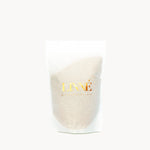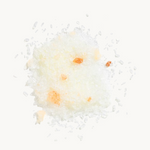KEY INGREDIENTS
Pure Skin Nutrition®

Lavender
Reduces stress and anxiety, alleviates pain, and enhances overall well-being.
View studies
Lavender
Ingredients
FAQs
What’s the difference between table salt and sea salts?
All salt contains sodium chloride. Table salt is typically mined from underground deposits and processed to remove other minerals. Sea salt is a general term for salt produced by the evaporation of ocean water or water from saltwater lakes. It is less processed than table salt and retains trace minerals.
Dead Sea salt provides an unparalleled concentration of beneficial minerals known to prevent and treat multiple skin conditions such as psoriasis, acne, hives, and rashes. This unique salt provides immune support, helps to alkalize the cells of the body to maintain optimal pH balance, and purifies the system as a whole. Our SOAK blend also features pink Himalayan salt, which is mined near the Himalayan Mountains of South Asia. Sea salt typically contains minerals like magnesium, calcium, and potassium, while Himalayan salt is known for including iron, zinc, and trace elements.
How much SOAK should I use?
Add approximately 1 cup of salt per bath for a soothing experience. However, if you're feeling indulgent, you can add the full bag for an extra luxurious soak.
Are there any contraindications?
Hot or warm baths should not be used by people with certain medical conditions except on the advice of a physician, especially pregnant or breastfeeding women.



































